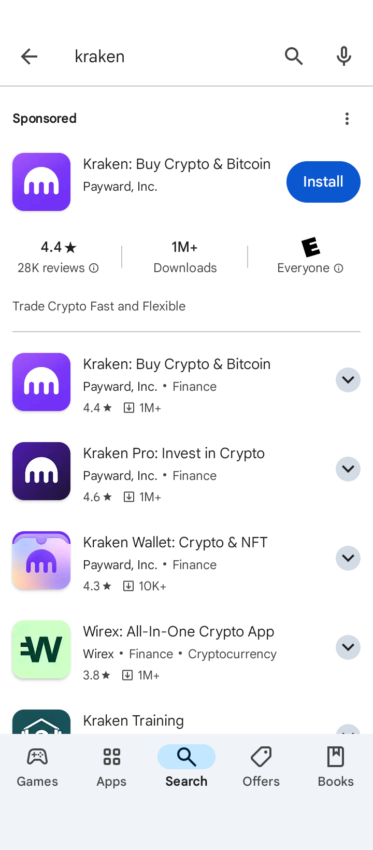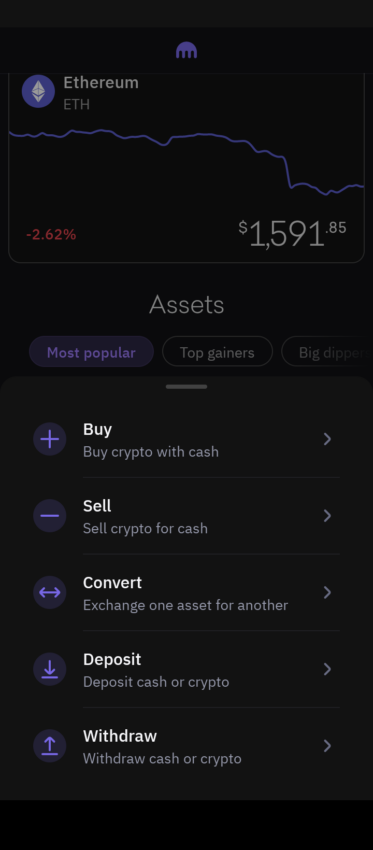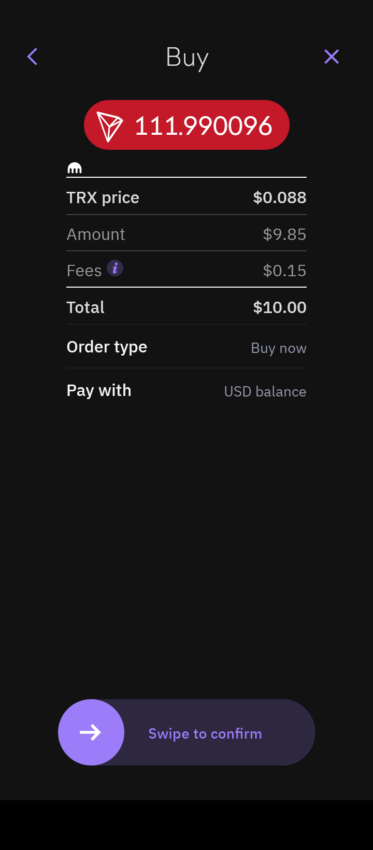Tron is a blockchain inextricably linked to the infamous Justin Sun. It has undergone many changes since its inception, often changing and pivoting its use case. Tron has also positioned itself as a key player in the blockchain space, supporting decentralized applications and smart contracts. In this guide, we cover what Tron is, its history, and how it works.
KEY TAKEAWAYS
➤ TRON is a decentralized content creation and distribution network, challenging censorship and traditional revenue models.
➤ Its ecosystem includes various DApps, a delegated PoS consensus, and TRON Virtual Machine, similar to Ethereum’s but focused on content.
➤ The network’s acquisition of BitTorrent highlights its commitment to content support, but it still faces strong competition from Ethereum, Solana, and Avalanche.
➤ TRON’s TRX token has a deflationary supply model and staking options, providing strong tokenomics, especially for its content creation market.
What is TRON?

TRON’s tagline is to “decentralize the web,” and its ecosystem consists of several decentralized applications, some of which are quite well known.
However, its primary purpose is to decentralize the content creation and distribution industry, which has received criticism for its censorship and unfair revenue distribution. To this end, TRON provides several tools alongside its protocol to ensure more democratic content creation processes.
Some examples of centralized platforms that have censored videos and held a particularly strong revenue distribution control include YouTube. Indeed, the latter has censored several videos related to the cryptocurrency industry.
Monetization is also a commonly discussed pain point related to YouTube. For many whose income depends largely on content, this can have a serious impact on their lives.
The TRON network actually features a number of cryptocurrencies, including BitTorrent Token (BTT), JST, and a TRC-20 based version of the Tether (USDT) stablecoin. TRON has outlined a set of DApps that work with these tokens, and with BTT at least, that includes BitTorrent Speed, BitTorrent File System, and DLive.
What makes TRON stand out?
On the face of it, there isn’t much that separates TRON from its competitors. After all, all of them could just as well build the same DApps that TRON supports. Indeed, many of them already do.
The unique selling point of TRON is the content on the network that can be accessed by anyone, anywhere, with the prerequisite of an internet connection.
This helps transcend censorship measures imposed by governments or companies. Several countries with totalitarian governments restrict websites and platforms, and TRON can help in this battle against censorship. Furthermore, Tron has gained a stronghold in Asian markets and holds a large supply of Tether out of all blockchains.
TRON’s evolution as a content-focused network
TRON was first launched in Jul. 2018, by the charismatic and contrarian Justin Sun, who has made a name for himself in the market with his fiery statements. The vision for the blockchain, first conceived in 2017, has been described as “decentralizing the web,” though its focus has narrowed down in more recent times.
TRON was first available on the Ethereum network.
The TRON Foundation leads the development of the TRON blockchain and cryptocurrency — and interestingly enough, it was first available on Ethereum, though it has since separated.
The Tronix token (TRX) was often present in the top 30 cryptocurrencies by market cap, though newer currencies have demoted it a few positions since. Nevertheless, TRON’s evolution over the years has still kept it relevant.
The TRON Foundation conducted an ICO in 2017, raising $70 million. Within a year, it launched its testnet, a blockchain explorer, and a web wallet, with the mainnet launching in May 2018. The following month, the network moved out of the Ethereum network and operated independently.
In July 2018, one of the most notable developments in TRON’s history, which we will explain in detail later, was its acquisition of the popular file-sharing network BitTorrent. Since then, TRON has focused on refining the network for its primary use case: supporting content creators.
TRON’s features, workings, and use cases

When asking a question like ‘What is TRON?’, it would be incomplete to talk without going over some features and how it operates and, of course, use cases.
Some of TRON’s core features include its delegated PoS consensus algorithm, its unique token standard that supports a few different types, including NFTs, and its ecosystem of DApps.
As for its DApps, TRON’s ecosystem includes DEXs, a blockchain explorer, a wallet, lending platforms, and a decentralized oracle, among other applications.
The TRON Virtual Machine (TVM) is responsible for executing smart contracts, much like the Ethereum Virtual Machine (EVM). It utilizes a three-layer architecture: a storage layer, an application layer, and a core layer.
Computing resources, including bandwidth and energy, are distributed equally among TRX holders. The team claims that the network can process up to 2,000 transactions per second.
As previously mentioned, TRON’s focus has been on content creation, but several other potential use cases with the TRON blockchain do exist. Among them are the aforementioned DeFi use cases and its BitTorrent services. However, it also owns Dlive, a video streaming platform that has had some success.
How does TRON fare against Ethereum and others?
| Blockchain | Coin | Descripton |
|---|---|---|
| Tron | TRX | EVM-compatible blockchain that creates a decentralized network for content creation and distribution. |
| Ethereum | ETH | A generalizable blockchain that supports the creation of applications with quasi-turing complete complexity. |
| Solana | SOL | Ultra-high throughput blockchain that facilitates fast and cheap transactions. |
| Avalanche | AVAX | A smart contract platform and network of subnets that offer fast finality. |
TRON’s largest competitor, without a doubt, is Ethereum. Naturally, other competitors are those that are competing with Ethereum — of which there are several. Given this hotly competitive space, TRON has an uphill battle as it attempts to get a sizable bite of the market share.
One could argue that the roping-in of BitTorrent is a significant milestone, but so far, that alone has not done enough to unseat Ethereum from its throne.
Furthermore, the other competitors, including Solana and Avalanche, are also employing new technological solutions, which leaves TRON in a bit of a state of uncertainty. It needs to stay up to date on the latest technological implementations and use case designs, while also working on its ecosystem.
The question is whether TRON can compete against these other projects with its standout features. But that is anyone’s guess.
Tokenomics

The TRX token initially held a circulating supply of approximately 101 billion tokens. The team cut the supply by roughly 5.6 million tokens in 2021. TRON made some headlines for this when the team claimed that this move would likely make TRON the first deflationary cryptocurrency in the world. As of 2025, the circulating supply is 84 billion TRX.
TRX price and predictions
The TRON price peaked at $0.2316 in Jan. 2018. The token is still significantly up for long-term investors, but the TRX price prediction is going to be a hard one to estimate.
After all, it is up against some major competition, and it is yet to have as large a grip on the wider public as those competitors. Still, those long-term investors will be happy to hodl and hope for a $1 price target. There’s no guarantee that it will hit that target, however.
To learn more about the potential performance of TRX, head over to BeInCrypto’s Tron price prediction.
Should you buy TRX?
This will largely depend on your own personal take on the TRX token and its uses. Nothing is a given in the cryptocurrency market, and the novelty of the technology means that new projects usurp old ones frequently.
As the protocol develops, the ecosystem grows, and new DApps arrive, potential investors will better understand the TRX token and its value.
TRON’s focus on democratizing content creation certainly has a place in the market, but whether it will be the top network for this use case remains to be seen.
However, it is worth keeping an eye on TRON in the years to come as the TRON Foundation continues to press on with its development. As always, do your own research and never invest more than you can afford to lose.
How to buy TRON (TRX)?
The TRON (TRX) cryptocurrency is available on most of the world’s most popular exchanges, including Binance, Coinbase, Kraken, Poloniex, OKEx, and Kucoin, — among many others. It is available on over 100 exchanges.
The following is the basic set of steps for buying TRX:
- Select an exchange of your choice
- Create an account and do the necessary documentation, which will include KYC
- Once your account is ready, add funds to it and place the order to buy TRX
The basic instructions should apply to most cryptocurrency exchanges. For our demonstration, we will use Kraken, but you can use whatever exchange you like.
1. Download the Kraken app: On your mobile device, download the Kraken app and open it up.

2. Press the search bar: After you open the app, you will see the following page. You can select the explore tab or go to the search bar and enter Tron.

3. Select buy: On the following page, you will see your transaction history and Tron’s price chart. Select the buy button to continue.

4. Enter the amount: Enter the amount of TRX you would like to buy and the payment method.

5. Confirm your order: Look over your transaction and confirm that everything is correct. Swipe to complete your order.

How to stake TRON

Staking the TRON (TRX) cryptocurrency is fairly simple, and there are several ways to go about it. Let’s assume you’re using Trust Wallet for this, which is a convenient way to stake TRX.
- Provided you have TRX in your wallet, go to the finance tab on Trust Wallet and choose TRX. This will take you to the TRON wallet.
- Click on ‘More’ and choose ‘Stake’ to select the asset you want to take. In this case, it will be TRX.
- You’ll then be asked to choose the staking amount and a validator.
- After setting the amount, review the transitions and click send. You will see a ‘pending’ notification until the transaction is confirmed.
- After a while, the transaction will be confirmed, and you’ll be able to see the staked amount. Congratulations, you’ve just staked TRX!
Does Tron have a long-term future?
Tron is no doubt a well-known project, but whether it will maintain the momentum of the early years is subject to debate. The crypto market has changed greatly since its early years, and Tron has maintained a lifeline in Asian markets and stablecoin issuance.
Having said all of that, it’s worth keeping an eye on a project that is still within the top blockchains for stablecoin supply. The content creation and distribution space stands to gain from decentralized technologies, so there may be something yet for TRON’s growth.
This article is not financial advice and is for informational purposes only. Trading cryptocurrency is risky and you could lose money. Invest wisely.
Frequently asked questions
What is TRON (TRX) used for?
Is TRON a good investment?
Will TRX reach $1?
Disclaimer
In line with the Trust Project guidelines, the educational content on this website is offered in good faith and for general information purposes only. BeInCrypto prioritizes providing high-quality information, taking the time to research and create informative content for readers. While partners may reward the company with commissions for placements in articles, these commissions do not influence the unbiased, honest, and helpful content creation process. Any action taken by the reader based on this information is strictly at their own risk. Please note that our Terms and Conditions, Privacy Policy, and Disclaimers have been updated.




